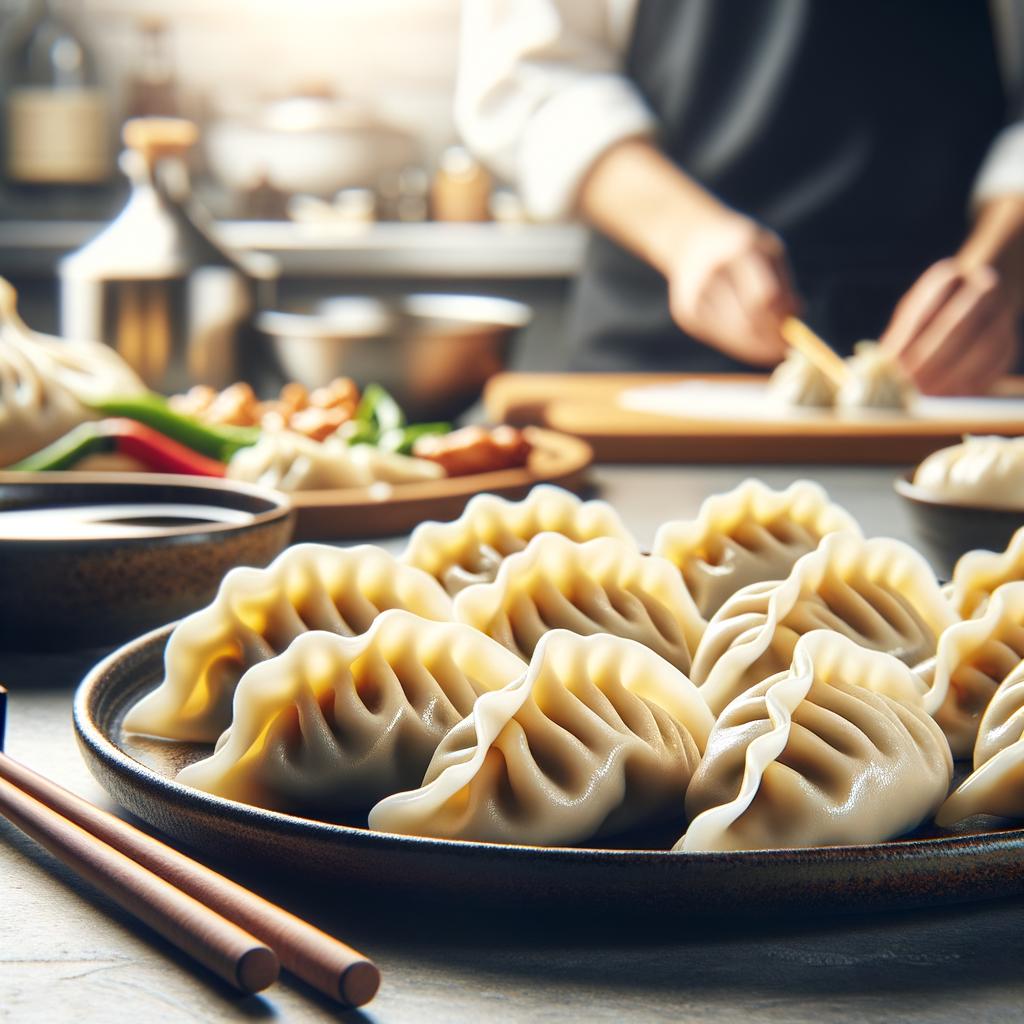for the Dumplings:

Description Dumplings, those delightful little parcels of joy, are a universal comfort food, transcending cultures and continents. Their appearance varies widely, from the delicate, translucent har gow of dim sum fame, to the hearty, crescent-shaped pierogi of Eastern Europe. However, the common thread that unites all dumplings is their tantalizing texture, which is typically soft and yielding, giving way to a burst of flavor from the filling within. The flavor profile of a dumpling is as diverse as its shape, ranging from savory meat or vegetable fillings to sweet fruit or custard ones. What sets dumplings apart from other similar ingredients is their versatility and the element of surprise that comes with each bite.
Primary Uses Dumplings are used in a myriad of ways across various cuisines. They can be boiled, steamed, fried, or baked, and are often a key component in soups, stews, or as standalone dishes. In Chinese cuisine, dumplings are a staple of Lunar New Year celebrations, symbolizing prosperity and good fortune. Beyond their culinary uses, dumplings also have cultural significance. In Jewish tradition, matzo ball dumplings are a comforting staple of Passover meals.
History The history of dumplings is as rich and varied as their fillings. They are believed to have originated in China over 1,800 years ago, invented by a physician to treat frostbite. From there, they spread across the globe, evolving to suit local tastes and ingredients. In Europe, dumplings became a hearty staple, using readily-available ingredients like potatoes, cheese, and various meats. In the Americas, dumplings found their way into dishes like chicken and dumplings, a comforting classic. Each culture has its own folklore and stories surrounding dumplings, often associating them with good luck, prosperity, or familial unity.
Nutritional Information The nutritional value of dumplings depends largely on their fillings and cooking method. Generally, they are a good source of carbohydrates, with protein content varying based on the filling. Vegetable-filled dumplings can provide a variety of vitamins and minerals, while meat-filled dumplings may be higher in protein and fat. However, it's worth noting that dumplings can be high in sodium, particularly if commercially prepared. Compared to similar dishes like pastries or pies, dumplings can be a healthier option, especially when filled with vegetables and steamed. As with all foods, they are best enjoyed in moderation as part of a balanced diet. Their nutritional profile, combined with their rich history and cultural significance, make dumplings a truly fascinating food.

